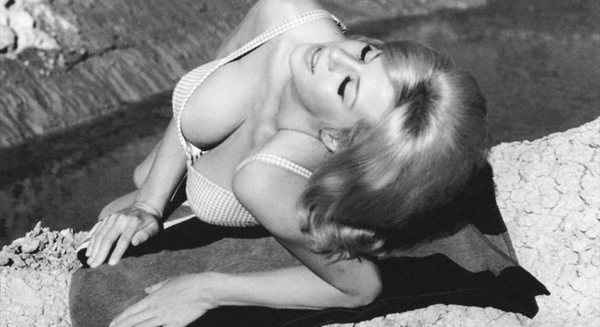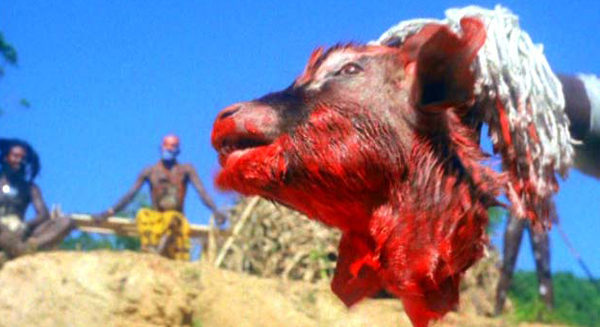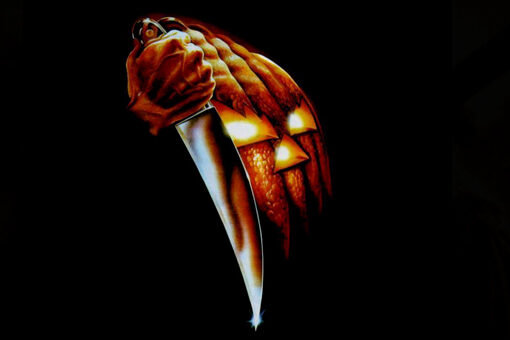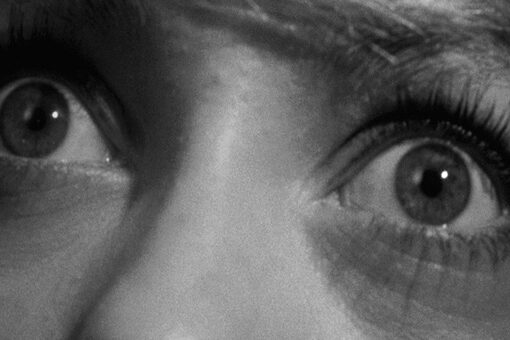In this new series, we’ll be listing a variety of popular grindhouse genres and subgenres, explain them for beginners (or newcomers), and provide outstanding examples and links to further reading for interested minds.
 Cautionary Films & Drugsploitation
Cautionary Films & Drugsploitation
The earliest kinds of exploitation films were actually presented as educational movies about things like the dangers of illegal drugs (The Devil’s Joint, Reefer Madness , Marihuana) and premarital sex (She Shoulda Said No! and Child Bride). These films (which often played in traveling roadshows) may have been conceived as sincere morality tales but often came across as sensational and very comical. Decades later during the beatnik and hippie eras many more films focusing on the downside of drugs (LSD, Heroin, Pot) were released such as The Hard Road, Mary Jane, High School Confidential and The Hooked Generation.
 Nudist Films/Nudie Cuties/Roughies
Nudist Films/Nudie Cuties/Roughies
The 1930s was when docu-dramas about nudity first appeared in theaters (This Nude World, 1932, Germany) and The Unashamed (1938)). In the late 50s and early 60s a new type of fictional nudist genre was created. A collection of low budget directors led by Edgar G. Ulmer (Naked Venus, 1958), David F. Friedman & Herschell Gordon Lewis (Daughter of The Sun, 1962) as well as Doris Wishman (Nude on The Moon, 1961) were the first to exploit this concept. The productions were mostly filmed within actual nudist camp settings and had offbeat plots. A little later, the Nudie-Cutie subgenre was born. These differed from their predecessors since they had various kinds of stories that took place outside the usual nudist camp settings. Some early successful examples are Russ Meyers’ The Immoral Mr. Teas (1959), and The Bellboy and The Playgirls (1962) directed by a young Francis Ford Coppola. “Roughies” were the next wave of more lurid Sexploitation cinema. These injected violence and sadism into the standard, rather innocent, softcore mix. They featured stories dealing with S&M, kidnappings and sexual abuse. It was pretty sick stuff and perfect for the adult Grindhouse theatergoers who craved more seedy, exciting thrills. Classics include the 60s Olga’s Girls series, Friedman and Lewis’ Scum of The Earth! (1963), Doris Wishman’s Bad Girls Go To Hell (1965) and Lee Frost’s The Defilers (1965).

This shocksploitation subgenre originated in Italy during the 70s and 80s. Taking inspiration from such mainstream movie classics as The Naked Prey and A Man Called Horse these graphically violent adventure/gore stories often focused on American or European expeditions that traveled to the jungles of South America and became unwitting victims of the cannibal tribes living there. Stomach churning scenes featuring animal cruelty, raw flesh eating and bloody castrations were nothing out of the ordinary in these movies. Notable titles include: Ruggero Deodato’s Cannibal Holocaust and Jungle Holocaust, Umberto Lenzi’s Eaten Alive!, Cannibal Ferox and Man From Deep River and Joe D’Amato’s Emanuelle and the Last Cannibals.
The Italian term “Mondo” translates to “world” in English. These were pseudo-documentaries/travelogues that usually exploited strange and/or shocking subject matter filmed in exotic places around the globe. There were also Mondos made that re-created various periods in history such as the slavery period (Goodbye Uncle Tom). Things you would see often in Mondo films included nudity, crazy tribal rituals, animal cruelty, barbarism and surgeries. They include the first true film of the genre Mondo Cane as well as Africa Addio, Mondo Magic, Mondo Topless, Shocking Asia and Brutes and Savages. A sub-subgenre of Mondo films are “Death” films such as the Faces of Death series which feature real deaths captured on film.
In the 1960s and 1970s Japanese studios took traditional tales of renegade samurai warriors which had been first envisioned by directors like Akira Kurosawa (Yojimbo, The Seven Samurai) and turned them into violent action-adventure films. The Zatoichi series starred Shintaro Katsu as a blind traveling masseuse/gambler who is also extremely deadly with a cane sword. Zatoichi’s persona as a kind harmless drifter who could cut opponents in half before they blinked was something international audiences loved. The Lone Wolf and Cub series (based on a popular manga) focused on an ex-shogunate executioner named Ogami Itto (played by Katsu’s brother Tomisaburo Wakayama) who travels across the Japanese countryside with his baby son Daigoro. These graphically violent tales often featured diabolical villains and blood spraying like geysers from severed limbs during sword battles. The original Japanese language movies were later re-edited, dubbed into English and released into US Grindhouse theaters under the titles Shogun Assassin and Lightning Swords of Death.
We’ll be back shortly with the next installment of our Furious Grindhouse Genres series. We welcome readers to post some of your favorite films and/or genres below in our comments section.









2 thoughts on “Furious Grindhouse Genres: Part 3”
Lone Wolf and Cub: Baby Cart at the River Styx is my favorite Pop Samurai film. And Cannibal Holocaust is the greatest Cannibal film ever.
Yeah Cannibal Holocaust is the best (Grindhouse Releasing’s 2 Disc Edition is a must own for fans), but one I can’t watch too often. Def have to be in the mood for that kind of stuff. My favorite Lone Wolf and Cub movie is Babycart To Hades. It’s awesome with the super weaponized cart, big battle at the end, etc.